Your project proposal has been rejected. It’s happened to all of us. Maybe you were told your proposal was rejected because of cost, or that another company had more to offer. The honest feedback most people won’t give you? The proposal wasn’t good.
While there are many bid rejection reasons, some of them can be addressed to ensure a more successful proposal next time around. To help you write a winning project proposal that doesn’t get rejected, we’re sharing the top reasons why proposals are rejected as well as tips to avoid those rejections.
1. Visually Unattractive
Though your bid might be expertly worded with all pertinent information clearly laid out, it might not matter if it doesn’t look good on the page or screen. Clear headings, small blocks of text, and proper organization can increase the overall effectiveness of your proposal.
A common misconception about proposals is that they must be printed in hard copy form. This might work if your services are fairly small in scope and complexity, but when most companies are seeking integrated operations, a more complex and interactive proposal is usually needed.
Today, most documents are sent electronically and viewed online—project proposals are no exception. In addition to being more convenient and environmentally friendly, electronic AV proposals can also make better use of graphics and quotes to increase your “wow” factor. Including other media like sound and video can also help your bid stand out from the rest and provide live examples of the services your company offers.
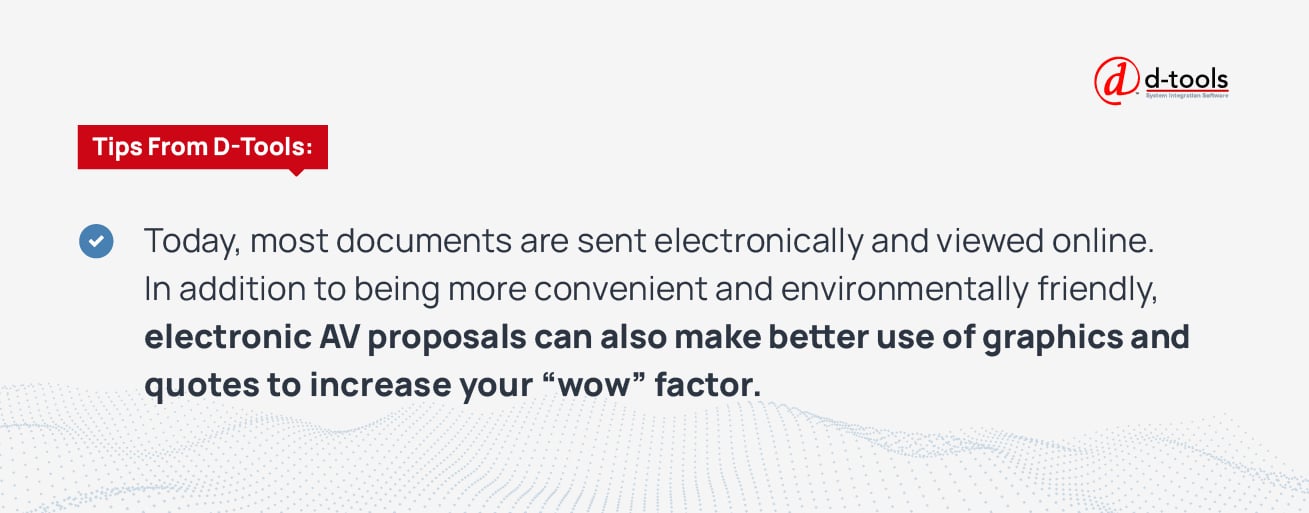
Be sure to keep your potential client in mind when deciding what types of format or media to use. Some clients may be more traditional, while others are looking for bids that jump out.
2. Misspelled Words or Grammatical Issues
Allowing misspellings or other grammatical errors to slip by in the final proposal you send to a potential customer will speak volumes about your company. While accidents can happen, a failure to thoroughly proof your document before it goes out can show a lack of professionalism and attention to detail, both essential to avoid when you’re trying to show a potential customer that you are the best choice.
3. Long Time to Bid
When companies seek a proposal, the sooner you can get it to them, the better. Creating manual bids can be time-consuming. Compiling the information, writing and laying it out, and then printing and binding can slow down your delivery time. Use AV proposal software to scale this process and reduce your time to bid.
4. Lack Differentiation from the Competition
What makes your service offerings different from your competitors? Clearly, spelling this out for potential customers will be what helps them make their final decisions. Take time to clearly communicate why your services stand out.
5. Unclear Offerings and Price
It seems like it would be common sense, but it’s possible your proposal didn’t outline exactly what you are offering and the cost. Or maybe it did, but not in a way that was easily understandable to your audience. When this information isn’t conveyed in a thorough manner, it might mean your proposal gets sent to the bottom of the pile.
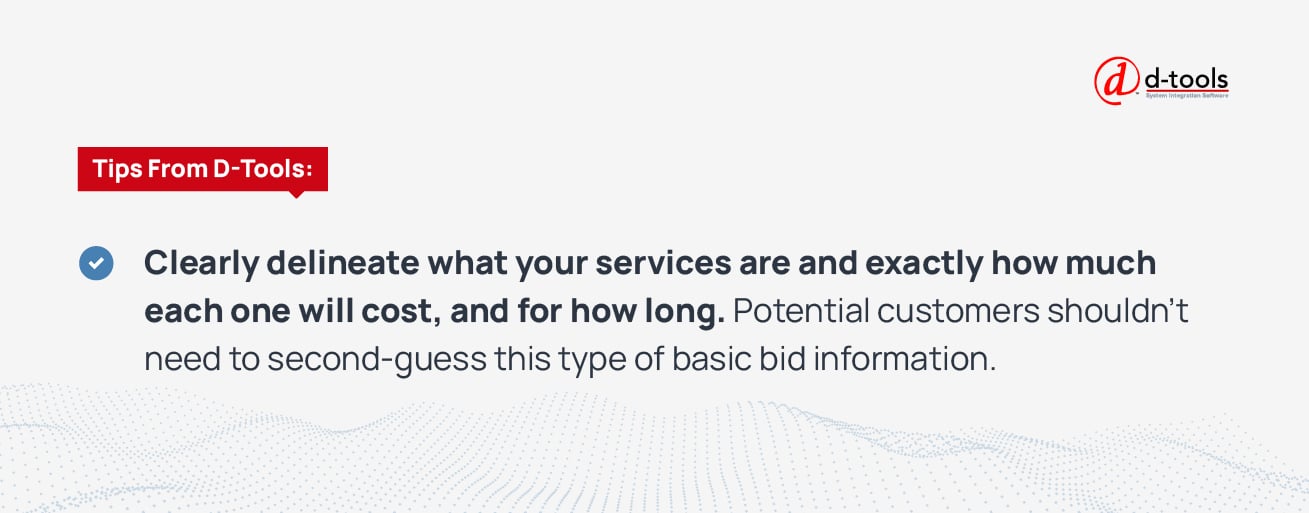
Clearly delineate what your services are and exactly how much each one will cost, and for how long. Potential customers shouldn’t need to second-guess this type of basic bid information.
6. Proposal Is Incomplete or Not as Expected
Each company may have a different idea about what constitutes a complete and detailed proposal. What you’ve sent your potential clients in the past just might not cut it for a new client.
One way to get around this is to show your potential client an example of a previous bid written for another client. Ask them if it shows the level of detail your new client is looking for. This way, you have ample time to provide the exact information your client wants, and on the first try. Ensuring you start meeting your client’s needs from the onset of the bid process can increase the likelihood they’ll want to work with you in the future.
7. No Team Introductions
Before a client signs on with your company, they probably want to know who they’ll be collaborating with. Introduce your management team and anyone who will frequently be interacting with your potential client.
Not only does this give your client a more personal view of your company, but it also provides the opportunity to showcase some of their achievements, successes, and recent projects.
8. Misunderstanding Client Needs
What is your potential client’s current situation? What challenges are they facing? This is the basis of a successful sale and a strong proposal. Failure to have a detailed understanding of this area will make your proposal creation process much more difficult.
Be sure to ask specific questions of your potential client before you get to the proposal stage, so when it’s time to write, you are ready to go with all the important information.
9. No Implementation Plan
While providing detailed service and pricing information is expected, going into more detail about how your company plans to implement the offered services is also crucial to a successful bid.
Think about it -- your potential client is seeking your services because they have a problem to solve. So while the services you offer may be exactly what the client needs, you need to be able to explain exactly how you plan to implement them, including information about when your company can start, how long it will take, and what the expected results are.
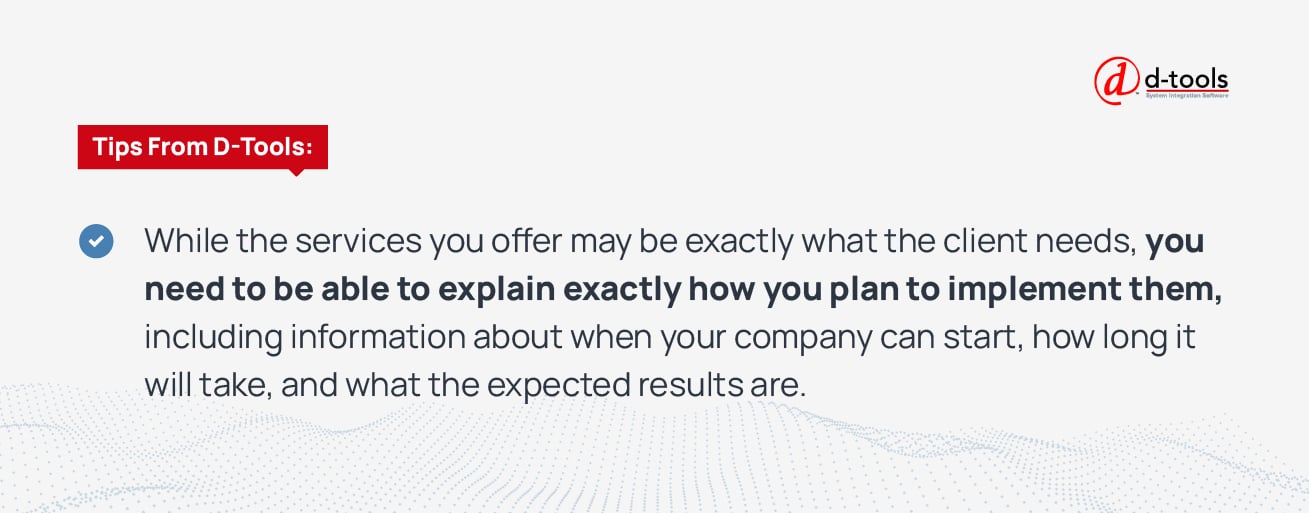
10. Unclear Delineation of Benefits and Value
While your bid may spell out the basics of your offerings, another important area to address is the actual benefits your services will offer your potential client. Make sure it’s obvious why your potential client should choose you.
Avoid language that points inward, such as we, us, etc. Write the proposal so that it’s tailored to that particular client’s needs and desires. Addressing those items directly along with specific ways your company can help will showcase the services and benefits you offer. Showing this value is key. It’s hard to sell a client on a set of services if they can’t see the value right in front of them.
11. Excess Text
There’s nothing wrong with copying and pasting text from past bids your company has written. There might be some sections that are relevant no matter who your potential customer is. However, be sure to read through everything you include and make sure it somehow pertains to the new customer you’re writing for.
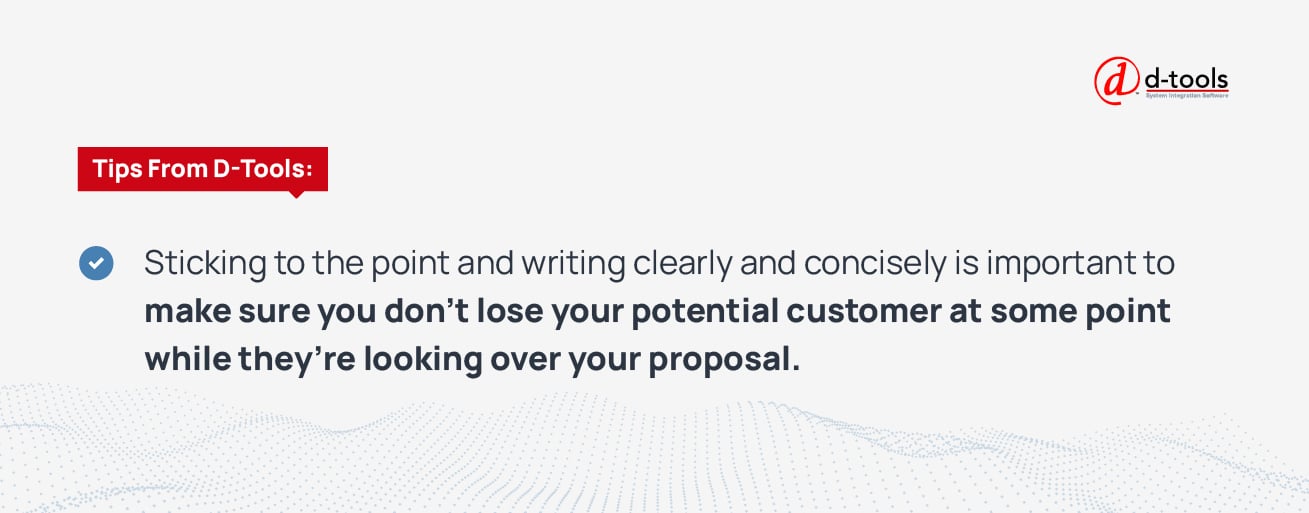
As with any document, sticking to the point and writing clearly and concisely is important to make sure you don’t lose your potential customer at some point while they’re looking over your proposal. You don’t want them to feel as though you have a “one-size-fits-all” approach to working with clients. Be sure to go through the proposal several times and eliminate anything that doesn’t have a specific purpose or somehow doesn’t align with your potential customer’s line of business.
12. Failure to Address Risks
While no one likes to think about it, there are always some potential risks involved whenever a company moves in a different direction. These risks could include anything from loss of business to a failed or unexpected implementation.
Though it might not seem intuitive to include this information, the fact is that some potential clients expect to see it -- and might be wary if they don’t see it included somewhere in the bid.
13. Too Much Technical Language
While it depends on the type of company you’re gearing your proposal to, beware of using overly technical language, and too much of it if it’s not necessary. This could intimidate your potential customer unnecessarily.
14. No Testimonials or References
Positive reviews, glowing testimonials, and strong references are all important to include in your bid. Nothing is more convincing than customers who have already experienced the many benefits your services can offer.
Before including this type of information in your proposal, be sure to ask permission. You want your existing clients to be ready and prepared if a potential client contacts them for more information.
Managing the Proposal Process
If your project proposal is rejected, don’t take it personally. Learn from your mistakes and do better next time. Though a typical bid creation process can be lengthy and expensive, there are ways to make it less complicated.
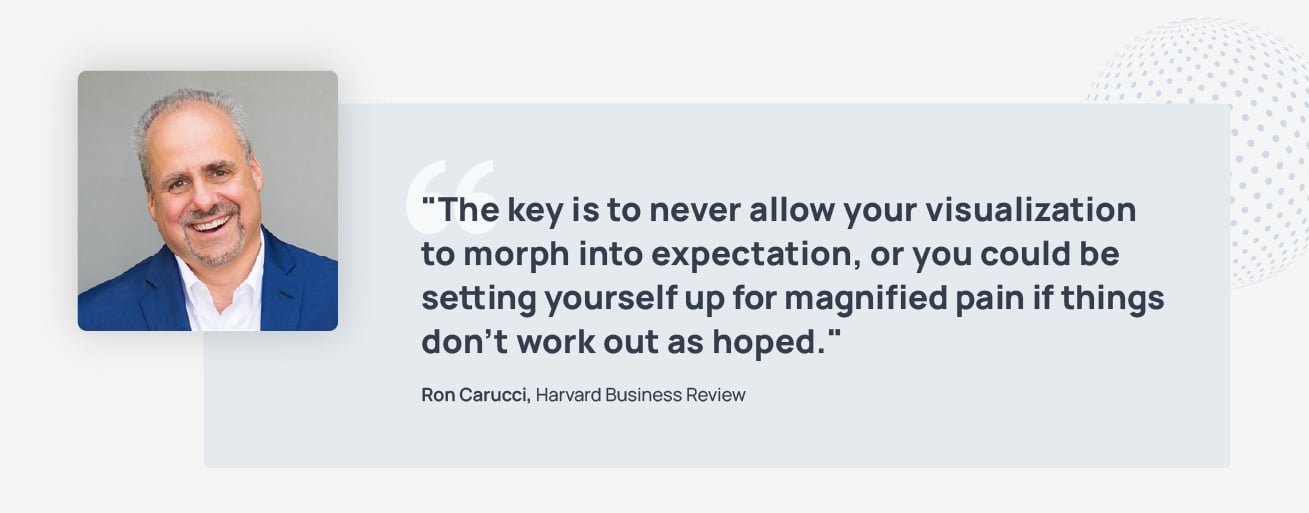
Do you need help streamlining your proposal process? Would an AV proposal software help you create more attractive and effective proposals, in order to ensure client confidence and close more business quickly?
Scale your business to levels you never thought were possible with help from D-Tools. Learn how D-Tools’ Cloud and System Integrator software products can drive sales and add efficiency to your processes.



